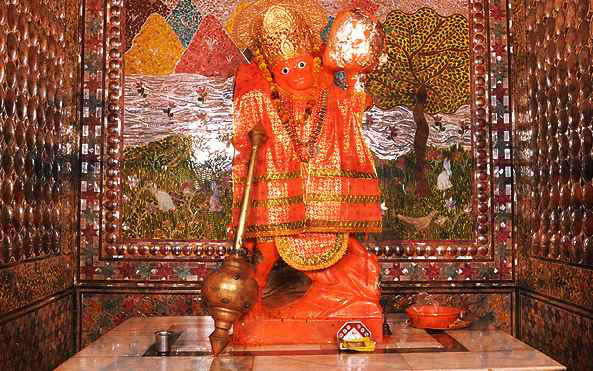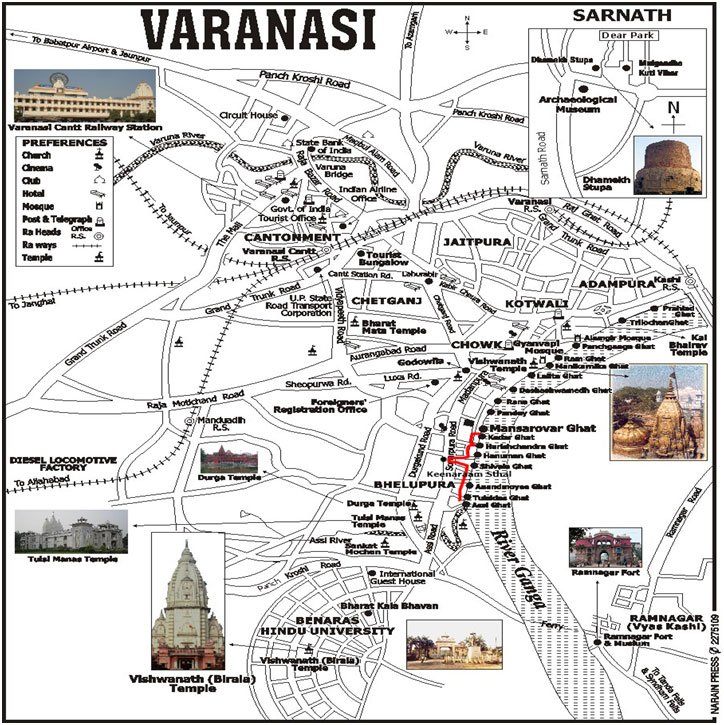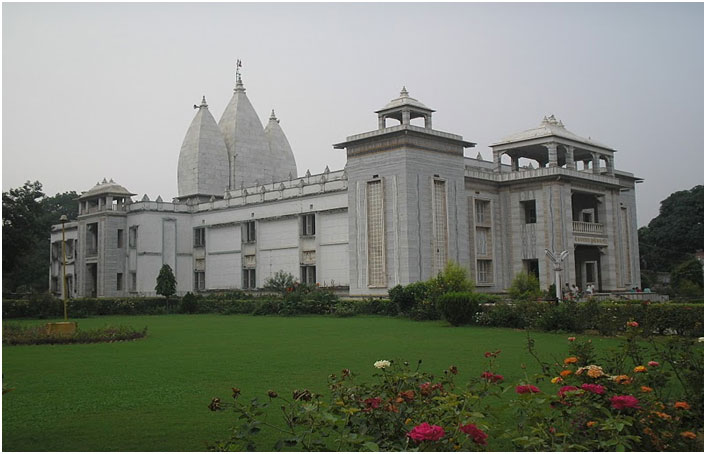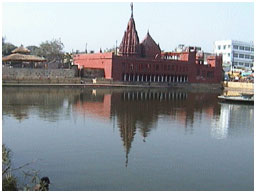
The Sankat Mochan Hanuman temple, which is situated by the Asi River, is one of the sacred temples of the Hanuman. According to historical legend, the temple was built on the spot where the saint Tulsidas had a vision of Hanuman.
Tulsidas & Sankatmochan temple:
Tulsidas, the great Indian poet is well renowned for his literary genius not only in India but also world over. He was born in Rajapur, Chitrakoot in year 1532. Tulsidas was left as an orphan since birth. In his childhood, he was taken care by his Guru Narharidas, a Vaishnava ascetic. Like any other student of his Guru he was given the diksha of Virakta sect. One interesting event of his life comes at the juncture of youth after his marriage to Ratnavali. When he heard that her wife left for visiting her parents, he immediately left worshiping in temple and immediately left to meet her at night. He crossed the overflooded Yamuna & ascended the balcony of his wife by using snake as a rope to meet her. His wife chided him saying that he appeared to be a saint and worshipper of Lord Ramachandra but if he just had half of the enthusiasm of attraction to my flesh body towards worshiping Lord Rama, you would achieve more results. Hearing this, Tulsidas underwent transformation and left at once for Prayag & renounced the household life. After renouncing, Tulsidas travelled all over India like Dwarka, Puri, Badrinath, Rameshwaram and many other places to discuss with saints enquiring the Absolute truth. He travelled to Mansarovar Lake where he met Kak Bhushundi (Saint crow) – one of the well known speaker of Ramayan. Having heard Ramayan directly from Kak Bhusandi, Tulsidas returned back. After this, he started to live permanently in Varanasi & started to recite Rama story for commoners. He used to visit nearby forest in the morning & used to throw the remaining water from his pot in the night at an old tree. On that tree, a ghost who being always thirsty was happy with this daily supply of water. Being pleased by Tulsidas, he spoke to him and asked him for a boon that his only desire was that He would like to see his Lord Rama. The ghost told him that it’s beyond his strength but at least he can help him to reach and locate Lord Rama’s devotee Hanuman. He told him that Hanumanji, in disguise, visited everyday to hear his Ramayan recitation. He should look for a person in the audience who comes first and leaves at the end thus understand him to be Hanuman. Next morning when he was reciting story he noticed a leper who was first to come & last to leave. He followed leper to the same forest near the place where today stands Sankatmochana temple. Tulsidas fell to the leper’s feet & said he knew who he was and that he should kindly not forsake him. Hanuman manifested his real form & told him that he should go to Chitrakut and that he can see his Rama in Chitrakoot. On his request, Tulsidas went to Chitrakut and stayed on banks of Mandakini and finally at last got the darshan of Lord Rama in Chitrakoot.
After this, Tulsidas came back and made the figure of Hanuman in Sankatmochan area by mud. In this temple area, he used to worship this deity daily & wrote his famous Hanuman Chalisa. He also began his life’s masterpiece Ramcharitamanas in Varanasi. When he completed the Ramcharitramanas, the pandits of Varanasi disrespected his work & to prove its credentials they kept the Ramcharitramanas at the bottom of four Vedas in Vishwanath temple at night and locked the door. In the next morning, when the doors were opened, Ramcharitramanas appeared on the top of the Vedas and proved its credentials. Thus Tulsidas’ glory spread far and wide. Finally Tulsidas died in 1632 at Assi Ghat in Varanasi.


 Godess Durga is considered as the goddess of strength and power. This temple was built in the 18th century with red stone work. A fine example of Nagara art. This temple falls on the main route from Railway Station to Benaras Hindu University, just before Tulsi Manas temple and Sankatmochan temple.
Godess Durga is considered as the goddess of strength and power. This temple was built in the 18th century with red stone work. A fine example of Nagara art. This temple falls on the main route from Railway Station to Benaras Hindu University, just before Tulsi Manas temple and Sankatmochan temple.